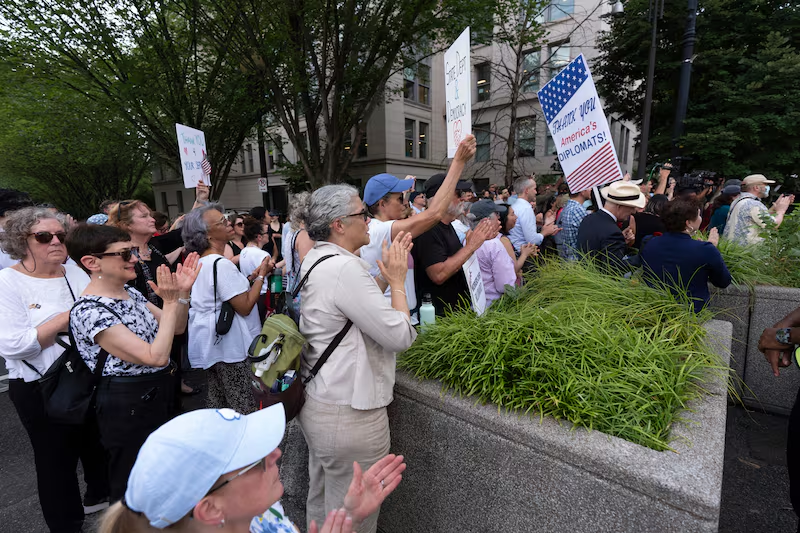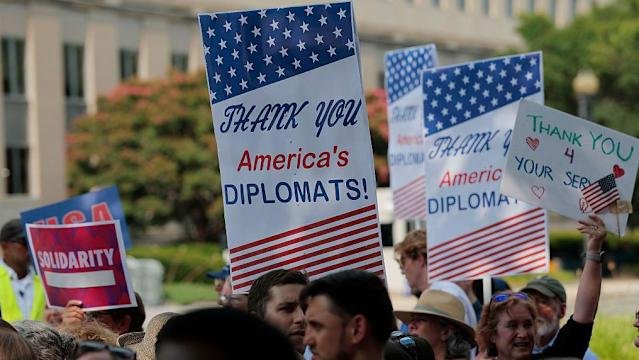The U.S. State Department has announced that it will lay off approximately 1,300 civil servants and foreign service officers in 2025. These job cuts are part of a broader restructuring effort aimed at streamlining operations and reducing federal spending.
This development has sparked reactions across the country — from lawmakers and unions to diplomats and public policy experts — all raising questions about the timing, impact, and necessity of such a massive cut.
Let’s take a closer look at what these State Department layoffs in 2025 mean, why they are happening, and how they will affect America’s foreign policy machinery and global presence.
Why Is the State Department Laying Off 1,300 Workers?
According to official statements, the layoffs are part of a federal cost-saving strategy approved during the latest budget negotiations. The Office of Management and Budget (OMB) has been working with various federal agencies to identify areas where cuts could be made without, as they put it, “undermining core national interests.”
Key Reasons Behind the Layoffs:
- Budget constraints: The U.S. government is facing mounting pressure to reduce spending amid a growing national debt and economic uncertainty.
- Digital transformation: The State Department is reportedly investing in digital tools and artificial intelligence to replace or supplement some of its traditional workforce functions.
- Operational overlap: A review found redundancies between domestic offices and overseas posts, prompting decisions to cut back staff.
Still, critics argue that the cuts are too deep and too sudden.
Who Will Be Affected by the State Department Layoffs in 2025?

The 1,300 jobs on the chopping block include a mix of experienced civil servants and foreign service officers. While some of these workers are based in Washington, D.C., others are stationed in U.S. embassies and consulates around the world.
Types of Roles Affected:
- Policy analysts
- Regional desk officers
- Consular support staff
- Visa processing officials
- Administrative and logistics teams
- Mid-level foreign service diplomats
Officials say that some staff may be offered early retirement or reassignments, but a large portion will face involuntary separation.
Impact on U.S. Foreign Policy and Diplomacy
Foreign policy experts have warned that the State Department layoffs 2025 could create serious gaps in America’s diplomatic network. With global tensions high in regions like the Middle East, Eastern Europe, and the Indo-Pacific, some fear that cutting staff now is risky.
Possible Diplomatic Risks:
- Delayed response time: Fewer diplomats may lead to slower responses to international crises.
- Weakened relationships: Long-standing relationships with other nations may suffer without consistent engagement.
- Reduced influence: The U.S. could lose ground to rival nations that are expanding their diplomatic efforts, like China and Russia.
Ambassador Linda Thomas-Greenfield, a former State Department official, called the layoffs “deeply troubling” and said they could “undermine years of investment in foreign service training and regional expertise.”
Reactions from Capitol Hill and the Public
Members of Congress from both parties have expressed concern over the decision.
Notable Reactions:
- Senator Chris Murphy (D-CT) said the layoffs would “cut muscle, not fat,” warning that important diplomatic missions will be left unsupported.
- Senator James Risch (R-ID), the ranking member of the Senate Foreign Relations Committee, questioned whether the State Department had exhausted all other options before deciding on layoffs.
- The American Foreign Service Association (AFSA) issued a statement demanding transparency in the layoff process and better support for those affected.
Public reaction has also been mixed. Some taxpayers support cost-cutting, but others worry about the long-term implications of downsizing a critical branch of government.
What Happens Next for Those Laid Off?

The State Department has pledged to provide transition assistance, including resume support, job placement programs, and career counseling. However, employees say the outlook remains uncertain.
Support Being Offered:
- Early retirement packages for eligible employees
- Job retraining programs in partnership with other federal agencies
- Mental health counseling and transition workshops
Despite these measures, many affected workers are feeling blindsided.
“I gave 15 years to this department,” said one foreign service officer anonymously. “Now I’m being told my role is no longer needed. It feels like a betrayal.”
Could More Layoffs Be Coming?
Some insiders worry that this may be just the beginning. If economic pressures continue and political divisions persist, other federal departments might also face similar cuts.
In fact, sources at the Department of Homeland Security and the Department of Commerce suggest that internal reviews of staffing levels are already underway.
How This Compares to Previous State Department Layoffs
The last major layoff at the State Department occurred during the Reagan administration in the 1980s, and even then, the scale was significantly smaller.
Comparing Past and Present:
| Year | Number of Layoffs | Reason |
|---|---|---|
| 1986 | ~500 | Budget Reforms |
| 2003 | Minimal | Reorganization post-9/11 |
| 2025 | 1,300 | Cost-Cutting, AI, Redundancy Review |
Today’s layoffs are not just larger—they are happening in a vastly more interconnected world, where diplomacy plays a central role in international stability.
What This Means for the Future of the State Department
While technology may improve efficiency, it cannot replace all human elements of diplomacy. Negotiations, cultural sensitivity, and crisis response often rely on trained professionals with deep knowledge and experience.
Some believe that this moment could lead to a redefining of the State Department’s mission, but only time will tell whether that’s for better or worse.
Conclusion: A Pivotal Moment for U.S. Diplomacy
The decision to lay off 1,300 workers from the U.S. State Department in 2025 marks a significant turning point in how America manages its foreign policy apparatus. Whether these cuts will streamline operations or cripple key diplomatic functions remains to be seen.
What’s clear is that the world is watching, and so are the people who have dedicated their lives to serving America’s interests abroad. As the effects of these changes ripple through embassies, consulates, and Washington offices, the need for thoughtful leadership and strategic planning has never been greater.
Read Next – Trump Russia Statement: ‘You’ll Be Seeing Things Happen’






